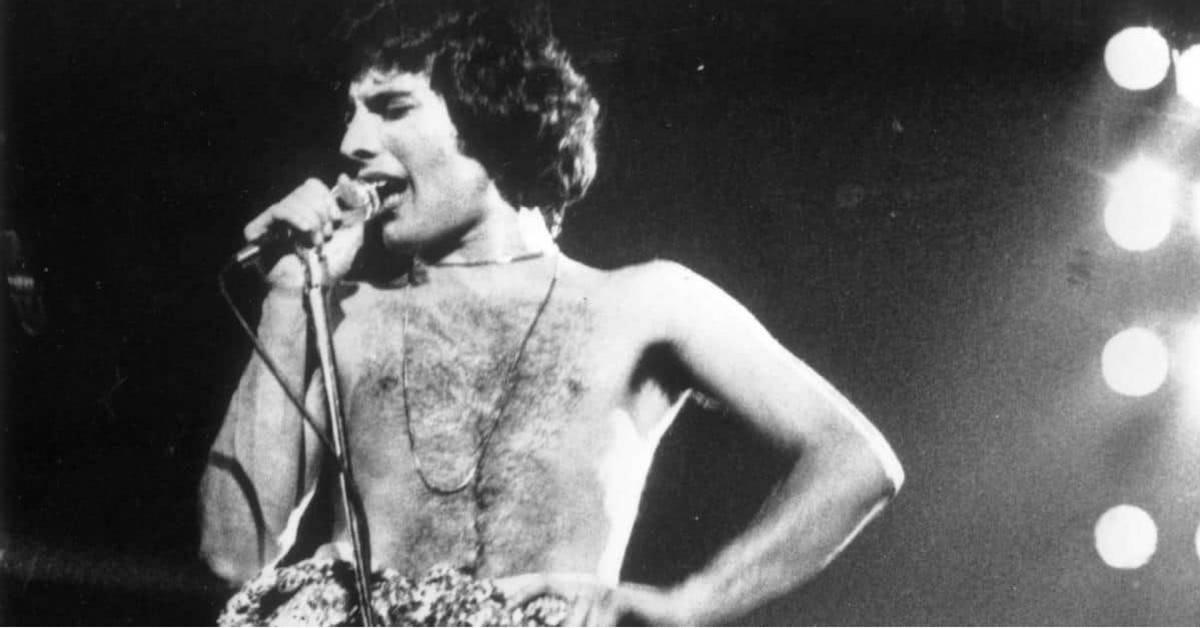He was born in Zanzibar, named Farrokh Bulsara, and schooled there and in India before relocating to England when he was seventeen. He learned to play piano as a child, taking lessons until he was nine, and though he wrote many songs on the instrument, he grew to be dismissive of his playing skills. In later life he claimed that he could read music but poorly, though many of his compositions were complex and musically innovative. His voice, which many claimed to carry a four octave vocal range (it reality it was just over three) became the distinctive sound of the band Queen.
Mercury was a flamboyant performer, drawing the audience into his act, but in private was described as shy and often withdrawn. He kept his personal life as private as he could, refused to answer questions regarding his sexuality, and didn’t admit that he was suffering from AIDS until just before he died of the disease, despite longstanding rumors. After his death many of his excesses became legend.

Here are some exploits and stories featuring the Freddie Mercury and Queen.

He kept his sexuality secret, even from Queen
When Queen was first building their following in the early 1970s, touring incessantly in England and Europe, guitarist Brian May frequently shared a room with Freddie Mercury. “I knew a lot of his girlfriends, and he certainly didn’t have boyfriends in those days, that’s for sure,” May later told the Daily Mail in an interview. May noted in another interview that over time in their dressing room Freddie’s visitors shifted from “hot chicks” to “hot men”.
As a schoolboy in Zanzibar, Freddie demonstrated behaviors which led a former schoolmistress, Janet Smith, to conclude at the time that the young man was gay. Smith recalled Freddie’s habit of referring to other boys as “darling”. “Normally it would have been, ‘Oh God, it’s just ghastly’. But with Freddie it somehow just wasn’t”, she recalled. When Freddie and his family fled to England, it was to a nation in which homosexual behavior was still illegal.
It is often claimed that Mercury described himself to an interviewer by proclaiming, “I’m as gay as a daffodil, my dear.” The interview cited was conducted by Julia Webb for the New Music Express, and appeared in the March 12, 1974 edition. A review of the article reveals that the quote does not appear, nor does a similar quote which could be taken out of context. What does appear is a statement by Webb that Mercury made the comment in a previous meeting.
Rumors of his sexual preferences dogged him throughout his career, supported by stories of the excesses of several parties, including one legendary birthday party described below. But he also complained frequently in interviews about his loneliness, describing himself in one interview as “desperately lonely.” Mercury said his success, “…prevented me from having the one thing we all need: a loving, ongoing relationship”.
In like manner, despite ongoing rumors and speculation regarding his increasingly gaunt relationship, Freddie refused to acknowledge that he was HIV positive and suffering from AIDS until issuing a statement the day before he died of complications from the disease. In his statement he promised to continue his longstanding policy of granting few interviews and continuing to protect his privacy, a promise kept when he was silenced forever just hours later.

